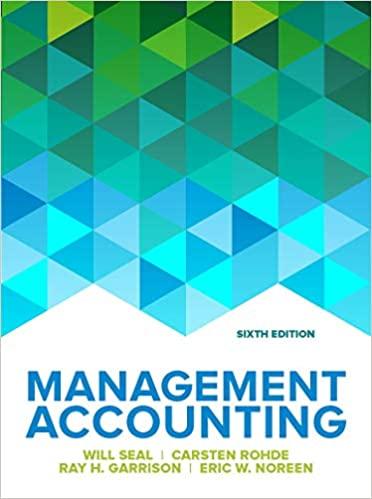Xico Ltd is a medium-sized sugar cane company in Mexico. The company divides the sugar cane into
Question:
Xico Ltd is a medium-sized sugar cane company in Mexico. The company divides the sugar cane into two parts: the top of sugar cane and the stalk. The stalk is used to obtain juice and bagasse. The juice is used to produce refined sugar and molasses. The final product the company sells is sugar cane, molasses and bagasse. The molasses are used as a raw material for the production of industrial alcohol, yeast and organic chemicals and the bagasse is used as biofuel and in the manufacture of pulp and building materials. The top of the sugar cane is left in the field and the farmers use it for animal feed. Currently, the company has an arrangement with local farmers and the farmers' union. The company harvests and transports all the raw sugar cane to the company and the cost is later deducted from the farmers' income. In addition, the farmers are charged an obligatory $30 per hectare for the tops of the sugar cane that are left in the field and the farmers can use the tops of the sugar at their disposal. Currently, 930 hectares are harvested and 40,000 tonnes of sugar cane are collected. Xico pays $600 per tonne of sugar cane. Recently, it has been pointed out that farmers are not using all the available tops for animal feed and the market is showing increasing demand for this product due to a severe drought in some parts of Mexico and the United States. Xico can process the tops of the sugar cane a little further (mixing it with molasses, packaging it and selling it). The total cost of producing the animal feed package is $24,000. The company would use 50 litres of molasses which cost $35 to produce and could have been sold for $70. The package of animal feed can be sold for $80.00 and the company expects to produce 2,000 packages. The company reached an agreement with the local trade union that 800 of the 2,000 packages will be sold to local farmers at the price of $10 per package.
Required
1. According to the information above, identify whether bagasse, molasses and sugar juice are joint costs, end products or intermediate products.
2. Explain how the company should handle the joint costs in the decision making of whether or not the business should process further the sugar cane tops.
3. Determine the total revenues from further processing the sugar cane tops.
4. Determine the total profits from further processing the sugar cane tops.
5. Based on the profit analysis above, would you recommend that Xico Ltd should maintain the arrangement with the local farmers of a flat charge per hectare for the sugar cane tops or would you recommend processing them further to sell as animal feed in packages?
Step by Step Answer:

Management Accounting
ISBN: 9780077185534
6th Edition
Authors: Will Seal, Carsten Rohde, Ray Garrison, Eric Noreen





